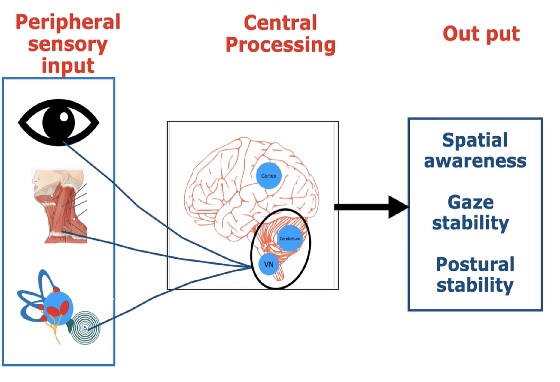In today’s fast-paced world, balance and dizziness issues are becoming more prevalent among individuals of all ages. These problems can have a significant impact on a person’s quality of life, making simple tasks difficult to perform and increasing the risk of falls and injuries. One effective way to address these issues is through vestibular therapy.
What is Vestibular Therapy?
Vestibular therapy is a specialized form of physical therapy that focuses on the vestibular system, which includes the parts of the inner ear and brain that help control balance and eye movements. This type of therapy is designed to help improve balance and reduce dizziness by targeting the underlying causes of these problems.
How Does Vestibular Therapy Work?
During vestibular therapy, a trained Vestibular therapist from North York will perform a series of exercises and maneuvers that are specifically tailored to each individual’s needs. These exercises may include head movements, eye exercises, balance training, and coordination drills.
The goal of vestibular therapy is to help the brain adapt and compensate for any vestibular dysfunction, ultimately improving balance and reducing dizziness. During vestibular therapy, a trained therapist will perform a series of exercises and maneuvers that are specifically tailored to each individual’s needs.
These exercises may include head movements, eye exercises, balance training, and coordination drills. The goal of vestibular therapy is to help the brain adapt and compensate for any vestibular dysfunction, ultimately improving balance and reducing dizziness.
The therapist will also teach the individual strategies to manage symptoms in their daily life and may recommend lifestyle changes to further support their progress. Regular sessions and consistent practice of the prescribed exercises are typically necessary to achieve optimal results.
Who Can Benefit from Vestibular Therapy?
Vestibular therapy can be beneficial for individuals who experience a variety of balance and dizziness issues, including: –
- Vertigo
- Benign paroxysmal positional vertigo (BPPV)
- Meniere’s disease – Labyrinthitis
- Vestibular neuritis
- Concussion-related dizziness
- Motion sickness
- Postural instability
Benefits of Vestibular Therapy
There are several benefits to undergoing vestibular therapy for balance and dizziness issues. Some of the key advantages include:
1. Improved balance and stability: Vestibular therapy helps to strengthen the vestibular system, which is responsible for maintaining balance. This can lead to improved stability and reduced risk of falls.
2. Decreased dizziness and vertigo: By addressing the underlying issues causing dizziness and vertigo, vestibular therapy can help reduce or eliminate these symptoms, leading to a better quality of life.
3. Enhanced coordination and spatial orientation: Vestibular therapy can improve coordination and spatial orientation, making it easier to navigate your surroundings and perform daily activities more effectively.
4. Customized treatment plans: A vestibular therapist will assess your specific needs and create a personalized treatment plan to target your unique symptoms and challenges.
5. Increased independence: By improving balance and reducing dizziness, vestibular therapy can help you regain confidence in your ability to move around independently and engage in activities you enjoy.
6. Prevention of future issues: Vestibular therapy not only addresses current balance and dizziness problems but also helps prevent future issues by strengthening the vestibular system and teaching strategies to cope with symptoms.
7. Non-invasive approach: Vestibular therapy is a non-invasive treatment option that focuses on exercises and techniques to improve vestibular function, making it a safe and effective choice for many individuals.
Research Supporting Vestibular Therapy
Studies have shown that vestibular therapy can be highly effective in improving balance and reducing dizziness in individuals with vestibular disorders. Research published in the Journal of Neurologic Physical Therapy found that vestibular rehabilitation was associated with significant improvements in balance and gait performance in patients with peripheral vestibular disorders.
Vestibular therapy involves exercises and activities that help to strengthen the vestibular system, which is responsible for maintaining balance and spatial orientation. This type of therapy can include head and eye movement exercises, balance training, and habituation exercises to help reduce sensitivity to motion. Individuals with vestibular disorders, such as benign paroxysmal positional vertigo (BPPV), labyrinthitis, or vestibular neuritis, often experience symptoms like dizziness, vertigo, and unsteadiness.
Vestibular therapy aims to address these symptoms by targeting the underlying causes of the imbalance. The research highlighted in the Journal of Neurologic Physical Therapy suggests that vestibular rehabilitation can lead to significant improvements in balance, gait, and overall quality of life for individuals with vestibular disorders. This type of therapy is usually tailored to each individual’s specific symptoms and may involve a combination of exercises and strategies to help improve balance and reduce dizziness.
Overall, the findings support the effectiveness of vestibular therapy as a non-invasive and drug-free treatment option for individuals struggling with vestibular disorders. If you are experiencing dizziness or balance issues, consulting with a healthcare professional or a physical therapist specializing in vestibular rehabilitation may be beneficial.
Conclusion
Vestibular therapy is a valuable treatment option for individuals struggling with balance and dizziness issues. By targeting the underlying causes of these problems and implementing tailored exercises, vestibular therapy can help improve balance, reduce dizziness, and enhance overall quality of life. If you or someone you know is experiencing balance and dizziness issues, consider consulting a healthcare provider to see if vestibular therapy may be a suitable option.

